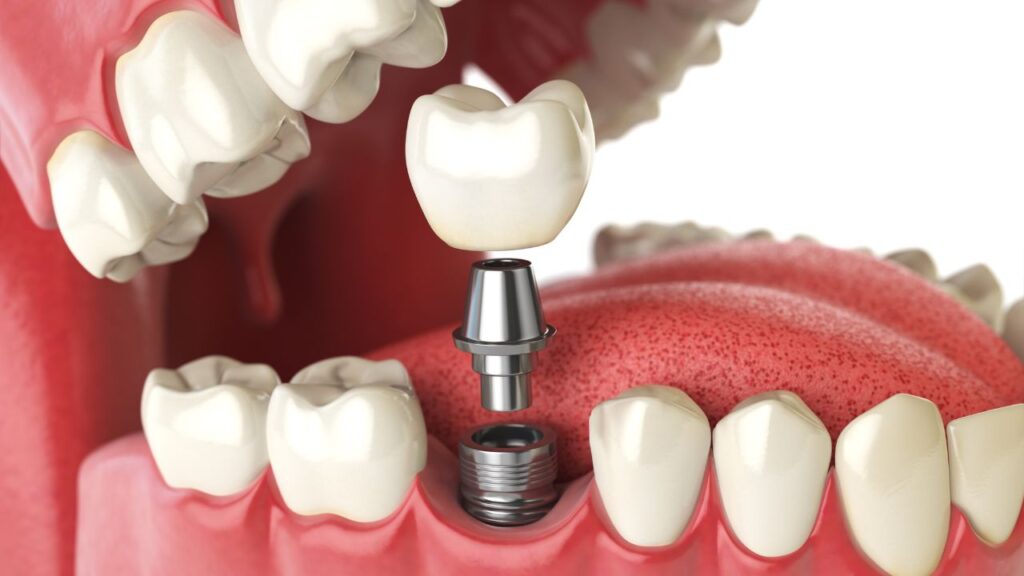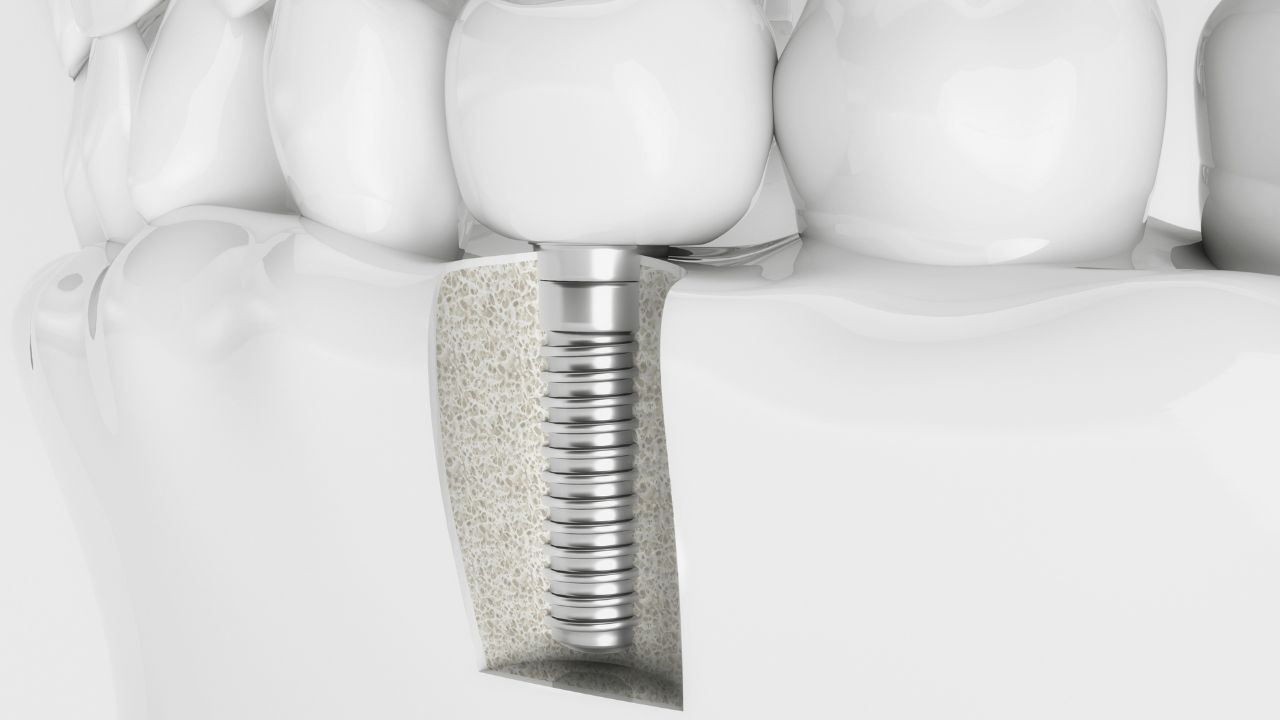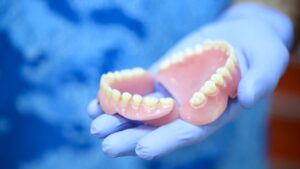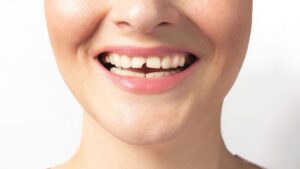If you are missing a tooth or two, modern dentistry offers a range of solutions to restore both function and confidence. While traditional dental implants are a well-established option, a lesser-known alternative, the mini dental implant (MDI), has been gaining attention.
This guide explores what mini dental implants are, how they differ from their traditional counterparts, as well as their benefits and limitations.
1. What Are Mini Dental Implants?
At its core, a mini dental implant is exactly what its name suggests: a smaller version of a conventional dental implant. Mini dental implants are designed for specific needs and situations where a larger option might not be suitable or necessary.
A Simple Explanation of MDIs
MDIs are tiny, screw-like posts, typically made of titanium, that are surgically inserted into the jawbone to act as an artificial tooth root. Their most defining characteristic is their size.
While traditional implants usually have a diameter of 3mm or more, MDIs are significantly narrower, generally measuring less than 3mm in diameter. Some describe their diameter as being more akin to a toothpick, compared to a regular household screw for traditional implants.
Structurally, MDIs often feature a one-piece design. This means the implant post and the connector (abutment) that will eventually hold the replacement tooth (like a crown or denture) are integrated into a single unit. Many MDIs designed for denture stabilization have a ball-shaped head that protrudes from the gum, allowing a denture fitted with corresponding O-rings to snap securely into place.
2. Mini Dental Implants Vs Traditional Implants
Understanding the distinctions between MDIs and traditional implants is crucial for anyone considering them. The differences influence everything from the surgical procedure to their ideal applications and long-term performance.
The smaller diameter of MDIs is a fundamental characteristic that leads to a cascade of other differences.
Because they are smaller, their placement can be less traumatic to the surrounding tissues. This often translates to a simpler surgical procedure, potentially avoiding the need for extensive gum incisions or stitches, which in turn can lead to faster healing and reduced post-operative discomfort. This less invasive nature, combined with fewer components in a one-piece design, can also contribute to lower overall treatment costs.
Read more about getting dental implants and their costs in Singapore.
However, this smaller size also means MDIs are not as mechanically strong as their larger, traditional counterparts. This is a critical factor that dictates where and how they can be used effectively.
Furthermore, the common one-piece design, while simplifying inventory, can limit the dentist’s options for attaching the final tooth restoration, especially if precise angles or custom shapes are needed for crowns or bridges. Traditional two-piece implants offer greater versatility in this regard.
These trade-offs underscore the importance of careful patient selection and understanding the specific applications for which MDIs are best suited.
3. Why Consider Mini Dental Implants?
Mini dental implants offer several attractive benefits, particularly for certain patient groups and dental situations. These advantages often revolve around a less demanding treatment experience and the ability to address issues where traditional implants might be less feasible or more complex.
Gentler on You: Less Invasive, Quicker Recovery
One of the most significant advantages of MDIs is the minimally invasive nature of the placement procedure. Dentists can often insert MDIs by making very small pilot holes directly through the gum tissue into the jawbone, sometimes without the need for cutting a large flap in the gums or placing stitches afterwards. This “flapless” technique means less surgical trauma.
For the patient, this typically translates to a more comfortable experience with less post-operative pain, swelling, and a significantly faster recovery period compared to traditional implant surgery. In many cases, patients can resume their normal activities much sooner. Some patients may even be able to have their final restorations, like dentures, attached to the MDIs on the same day as the implant placement.
Lighter on the Wallet? Potential Cost Savings
MDIs are generally presented as a more affordable tooth replacement option when compared to traditional dental implants. Several factors contribute to this potential cost-effectiveness:
- Simpler, Quicker Procedure: The less invasive surgery often means less chair time and fewer dental visits.
- Fewer Components: The common one-piece design of MDIs can reduce material costs.
- Avoiding Bone Grafts: A major cost component in traditional implantology can be the need for bone grafting procedures if the patient has insufficient jawbone. MDIs, requiring less bone for support, can often bypass the need for these additional complex and costly surgeries.
A Perfect Fit for Some: Ideal Uses
While not a universal solution, MDIs excel in specific clinical scenarios:
- Securing Loose Dentures: This is perhaps the most widely recognized and successful application for MDIs. Many denture wearers, especially those with lower dentures, struggle with instability, slipping, and discomfort. Placing a few (often 4-6) MDIs into the jawbone provides firm anchor points. This dramatically improves chewing ability, speech clarity, and overall confidence for denture wearers.
- Replacing Small or Narrow Teeth: MDIs are well-suited for replacing teeth in areas where space is limited, such as the lower front teeth (incisors) or some premolars. In these situations, a traditional implant might be too wide to fit without compromising adjacent teeth.
- When Jawbone is Limited: For individuals who have experienced significant jawbone loss (atrophy) over time, perhaps due to long-term tooth absence or gum disease, MDIs can be a viable option. Because they are smaller, they require less bone volume and density for successful integration, potentially allowing patients who were previously told they weren’t candidates for traditional implants (without grafting) to receive implant-supported restorations.
- Temporary Solutions: In some dental treatment plans, MDIs can serve as temporary anchors for provisional (temporary) teeth while traditional implants are healing, or as anchorage points for orthodontic (braces) treatment.
For individuals struggling with the daily frustrations of loose dentures, or those with specific anatomical limitations, the benefits of a less invasive procedure, faster healing, and potentially lower costs make MDIs an option worth discussing with a dental professional
4. Limitations & Risks Of Mini Dental Implants
It’s equally important to understand the limitations and potential downsides of MDIs:
- Strength and Durability Concerns: Due to their significantly smaller diameter, MDIs are inherently not as strong or robust as traditional implants. They are generally not recommended for replacing large back teeth (molars) which bear the brunt of chewing forces, as they may not withstand these forces over the long term.
- Higher Risk of Fracture or Failure (if misused): There’s a higher potential for MDIs to fracture or fail if they are placed in areas of high stress or if the patient has heavy biting habits (like teeth grinding). When used as permanent solutions, MDIs are more likely to have complications compared to conventional implants.
- Limitations of the One-Piece Design: While the one-piece design simplifies some aspects, it can be a limitation if the implant isn’t placed at the ideal angle for the final tooth restoration. Traditional two-piece implants allow for angled abutments to correct such issues, but this is not possible with most MDIs. This can sometimes lead to challenges in achieving optimal aesthetics or proper cleaning around the final crown or bridge. If an MDI fails or becomes damaged, the entire unit usually needs to be replaced.
- Not Suitable for Heavy Chewers or Teeth Grinders: Patients who clench or grind their teeth (bruxism) may exert excessive forces on MDIs, leading to wear, loosening, or failure.
- Long-Term Data: While MDIs have been used for many years, particularly for denture stabilization, there is less extensive long-term clinical research on their success rates for supporting fixed crowns and bridges compared to traditional implants. Patients should be made aware of this as part of the informed consent process.
- Hygiene Challenges: If multiple MDIs are placed very close together, particularly if splinted to support a bridge, it can sometimes be challenging for patients to maintain optimal oral hygiene around them, potentially increasing the risk of gum inflammation or peri-implant issues.
Experts in Singapore, including the National Dental Centre Singapore (NDCS), advise caution regarding MDIs for long-term tooth replacement. They generally do not recommend mini dental implants as a permanent tooth replacement solution. Their concerns are based on:
- Higher Risk of Breakage: The very narrow diameter of MDIs poses a higher risk of fracture over the long term.
- More Complications Observed: NDCS has reportedly seen more complications arising from mini implants used as a permanent measure compared to conventional implants with wider diameters.
- Typical Use at NDCS: Mini implants are typically used at NDCS for temporary purposes, such as providing anchorage during orthodontic (braces) treatment.

5. The Costs of Mini Dental Implants in Singapore
Cost is a significant factor for most people considering any dental procedure. Mini dental implants are often marketed as a more affordable alternative to traditional implants.
In Singapore, the cost for a single mini dental implant can range broadly, typically from around SGD $300 to SGD $2,500 per implant. Some sources indicate a range of SGD $700 to $1,500. This is generally lower than the cost of traditional dental implants, which can range from SGD $2,000 to $6,000 or more per tooth, depending on complexity.
6. Conclusion
Ultimately, the decision of whether MDIs are the right choice is a clinical one that must be made after a thorough examination and discussion with an experienced dentist. They are a valuable tool in specific circumstances but are not a direct, albeit weaker, substitute for traditional implants in all situations. The less invasive nature is appealing, but this must be weighed against their mechanical limitations and suitability for the individual’s specific dental needs and functional demands.









